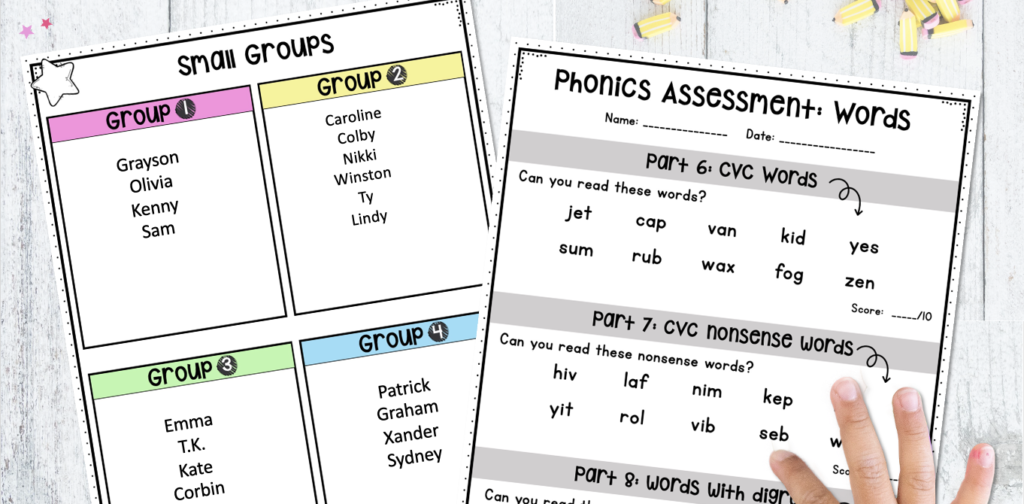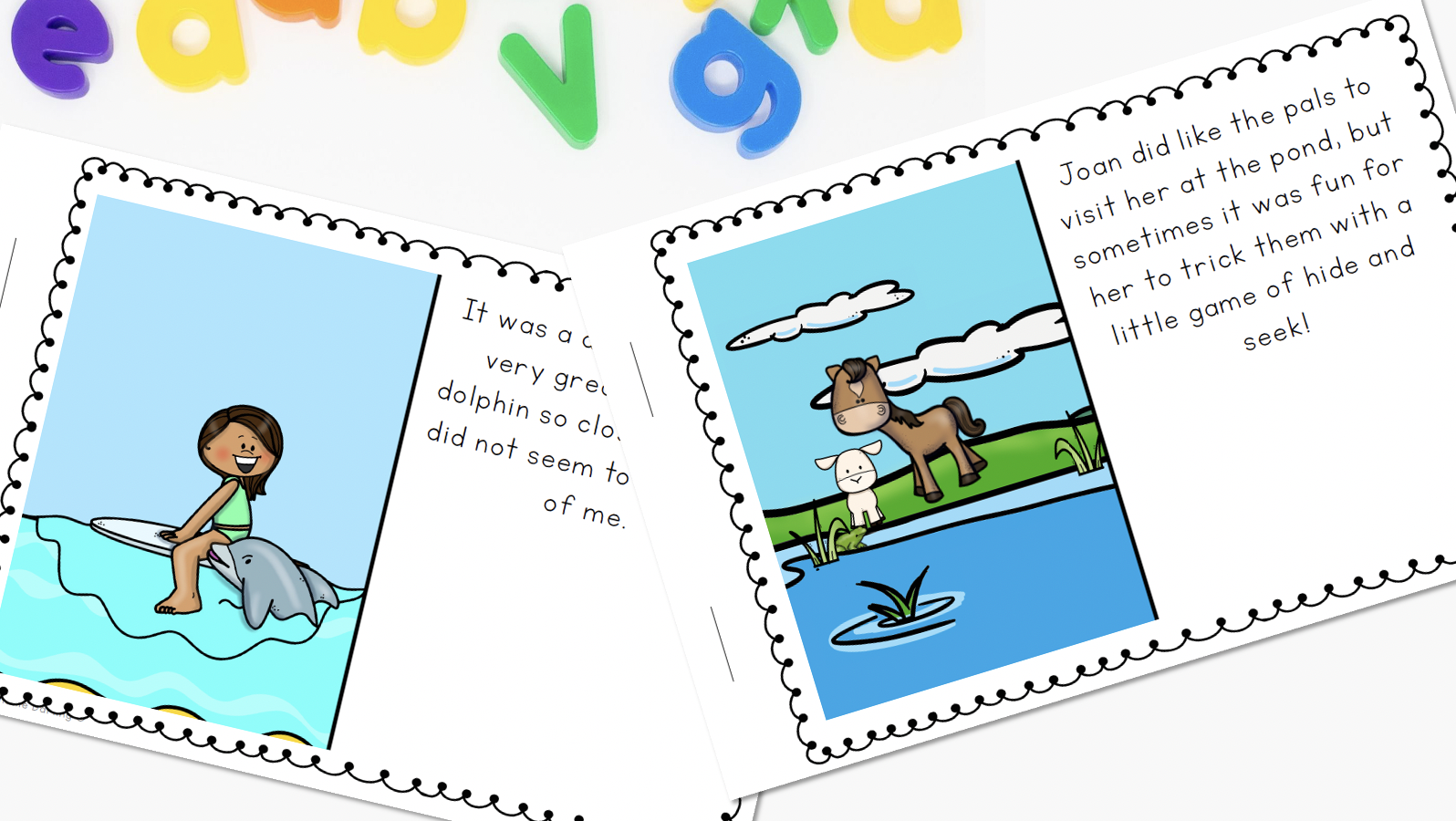Hey there fellow educator,
Let’s talk about effective small group instruction aligned to the science of reading. As we dive into this critical aspect of teaching literacy, it’s essential to ensure we’re aligning our practices with what research tells us works best. Here are some do’s and don’ts to keep in mind:
Do’s for effective small group instruction:
- Differentiate Instruction: Recognize that each student comes with their own set of strengths and areas for growth. Effective small group instruction is tailored to meet the diverse needs of your students. Use formative and diagnostic assessments to inform your teaching and adjust your approach accordingly. You can grab my free quick-start guide for small groups here. This incredible resource contains a great Phonics Assessment as well as instructions for how to administer and use it to plan your small groups!

2. Focus on Phonemic Awareness and Phonics: These foundational skills are crucial for early readers. Incorporate activities that help students recognize and manipulate sounds in spoken language, as well as decode words using sound-symbol correspondences.
3. Provide Explicit Instruction: Be clear and direct in your teaching. Break down complex skills into smaller, manageable steps, and model each step explicitly. Use multisensory approaches to engage students and reinforce learning. I am a big fan of the I do (teacher), We do (teacher and students), and You do (students do) model. This phrase was coined by Anita Archer.
- My biggest tip for this is that these three steps do not have to all happen within one session. Your students may need multiple lessons and chances for “we do” practice with their teacher before they are ready to perform a skill on their own. This was such an “Ah, ha!” moment for me.
4. Offer Opportunities for Practice and Feedback with Decodable Texts: Give students ample opportunities to apply what they’ve learned in meaningful contexts. Provide constructive feedback that is specific and actionable, guiding students toward improvement.
5. Promote Active Engagement: Keep students actively involved in their learning. Encourage participation through discussions, hands-on activities, and interactive games. Create a positive and supportive learning environment where students feel comfortable taking risks. I love to “make mistakes” myself as a reader, and think aloud to model for students how I can correct my mistakes as well as continue to be a confident reader despite making a few. 🙂
Don’t for effective small group instruction:
- Rely Solely on Whole Group Instruction: While whole group instruction is incredible! I teach so many lessons whole group every day, and see tremendous progress as a result. However, small group instruction allows for more targeted and personalized support, addressing the individual needs of students more effectively.
- Neglect Comprehension: Reading isn’t just about decoding words; it’s also about understanding and making meaning from text. Incorporate strategies that help students develop comprehension skills, such as predicting, summarizing, and making connections. For my beginning readers, we discuss the setting, and characters, and retell the story from beginning to end. As mentioned before, I use the I do, We do, You do method for this. Students need many I do, We Do opportunities before they begin this school independently.
- Overwhelm Students with Too Much Information: Be mindful of the cognitive load you’re placing on students. Avoid overwhelming them with too much new information at once. Instead, scaffold your instruction, gradually increasing the complexity as students demonstrate mastery. I love to stick to a review of previous learning, and then when students are ready, introduce a new skill or a skill that needs reteaching.
- Ignore the Importance of Fluency: Fluency is the ability to read with accuracy, speed, and expression. Help students develop fluency through repeated readings, modeling, and providing opportunities for oral reading practice.
- Forget to Monitor Progress: Assessment shouldn’t be a one-time event. Continuously monitor students’ progress and adjust your instruction accordingly. Use a variety of assessment tools, such as running records, to track growth over time.
- Use Leveled Readers. I bet I don’t need ot explain this one for you, but I felt it had to be included in a list of “Don’t do’s!”
Incorporating the science of reading into small group instruction requires intentionality and ongoing reflection. By following these dos and don’ts, we can create more effective and impactful learning experiences for our students. Let’s continue to grow and learn together as educators, always striving to improve our practice for the benefit of our students.
Keep up the great work!
Looking for Decodable texts and lessons that are aligned with the Science of Reading?
Click here to make planning those small groups a breeze!



No Comments